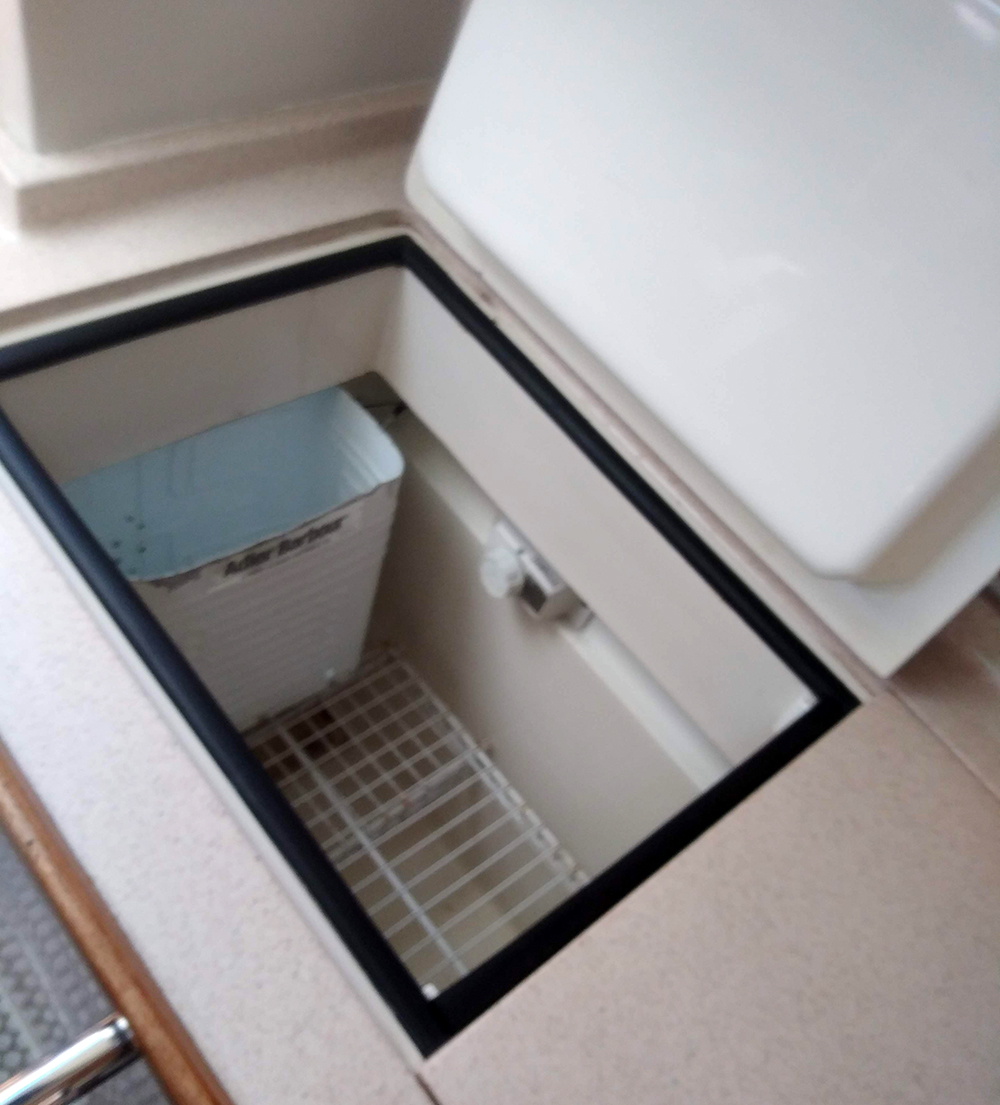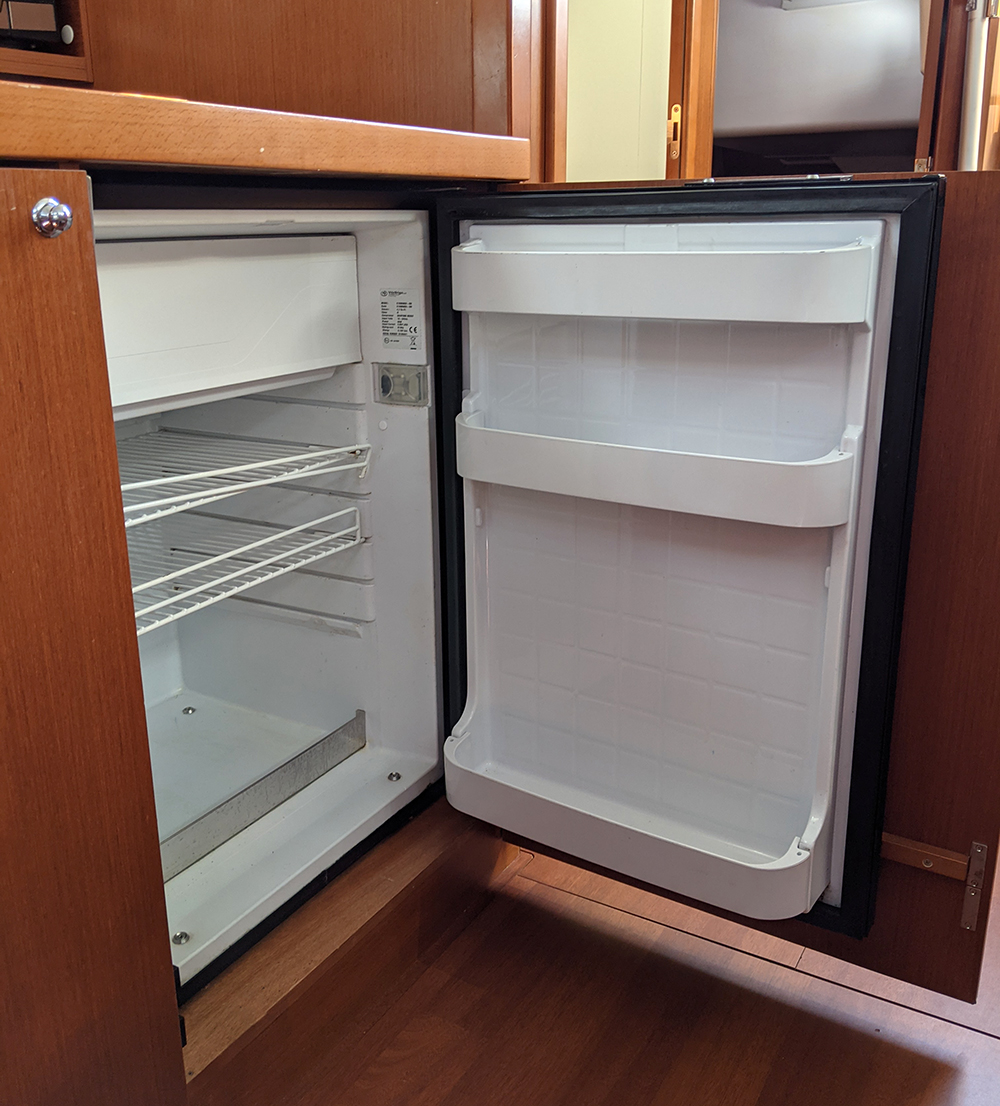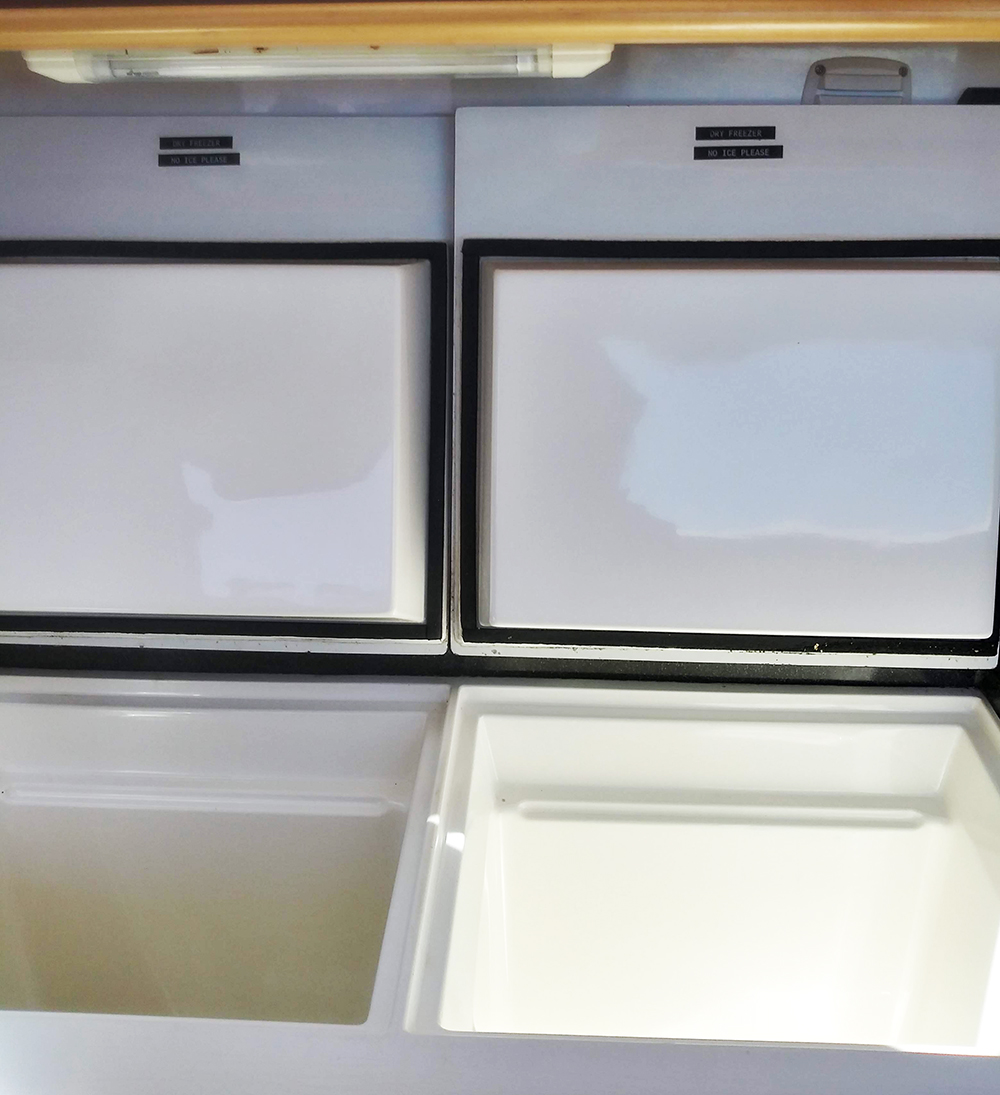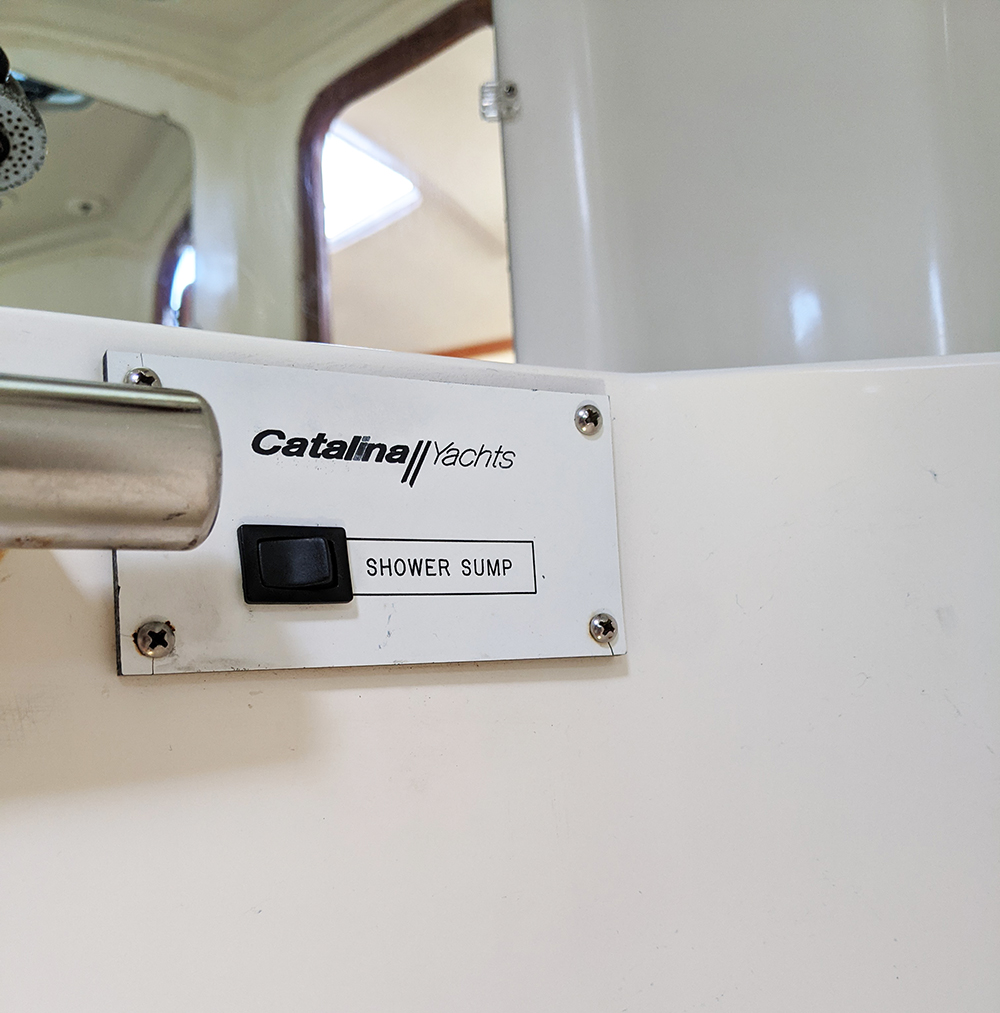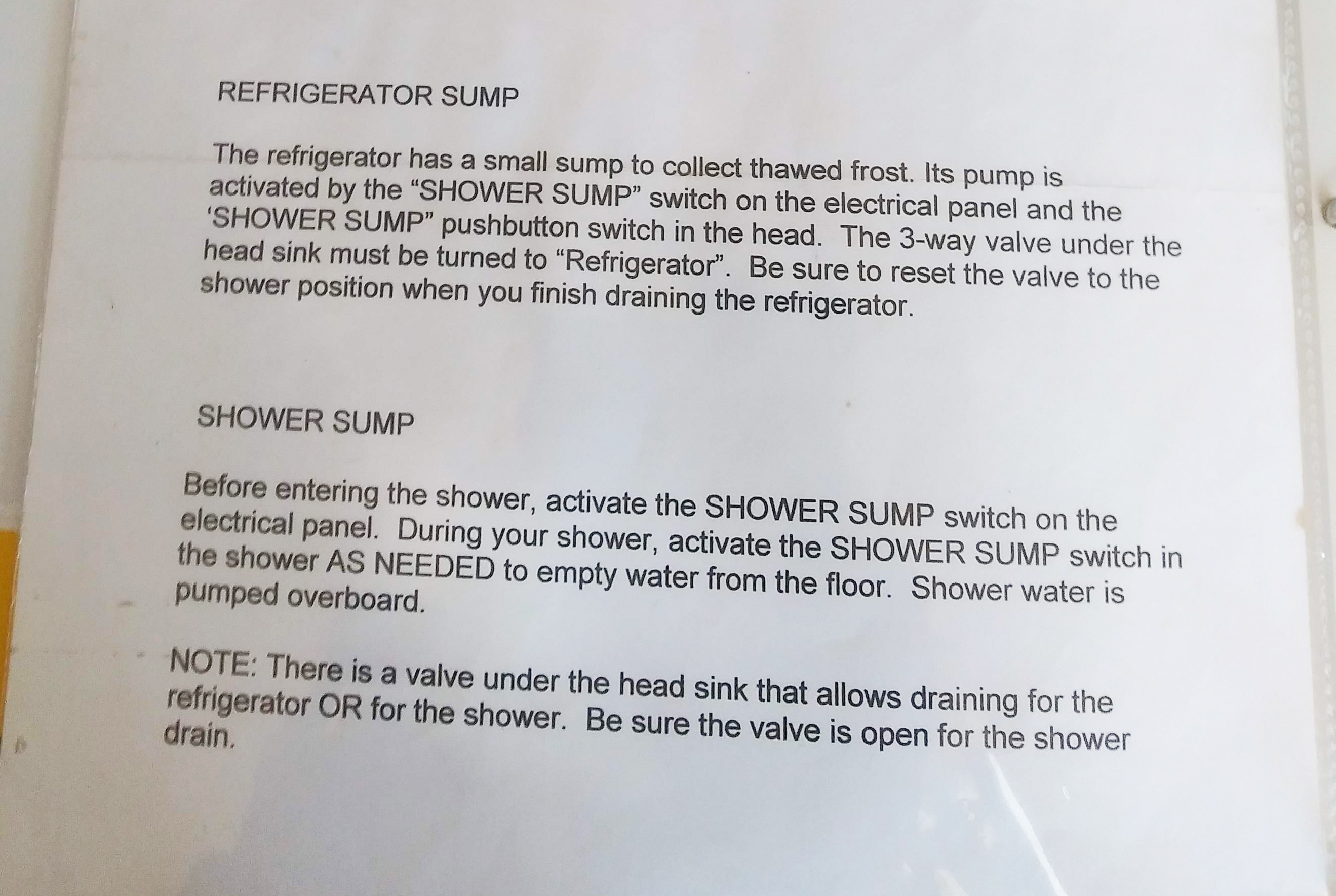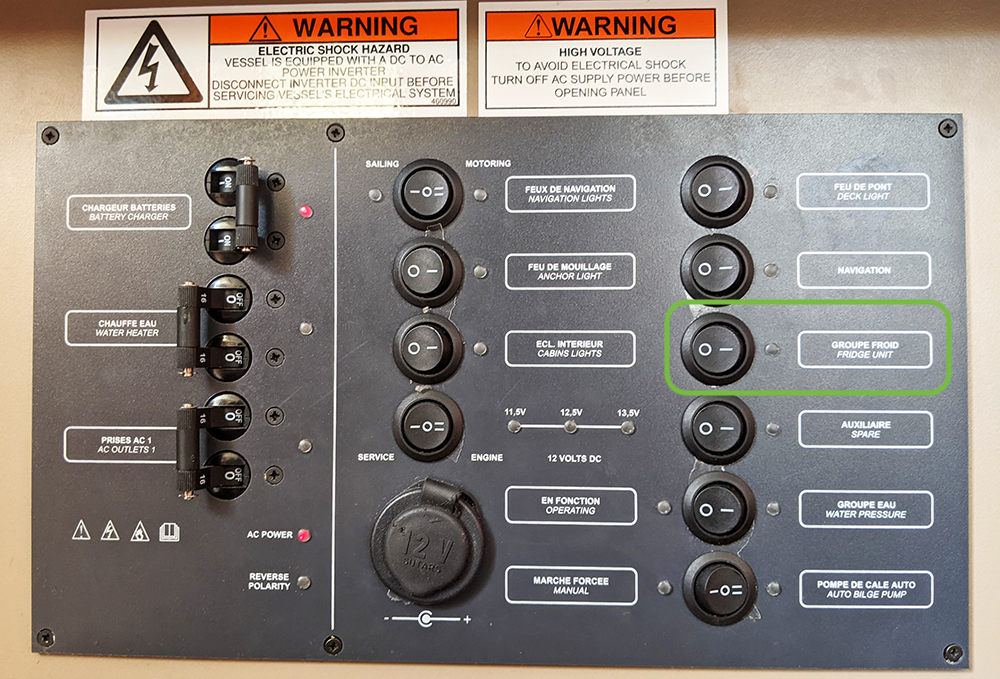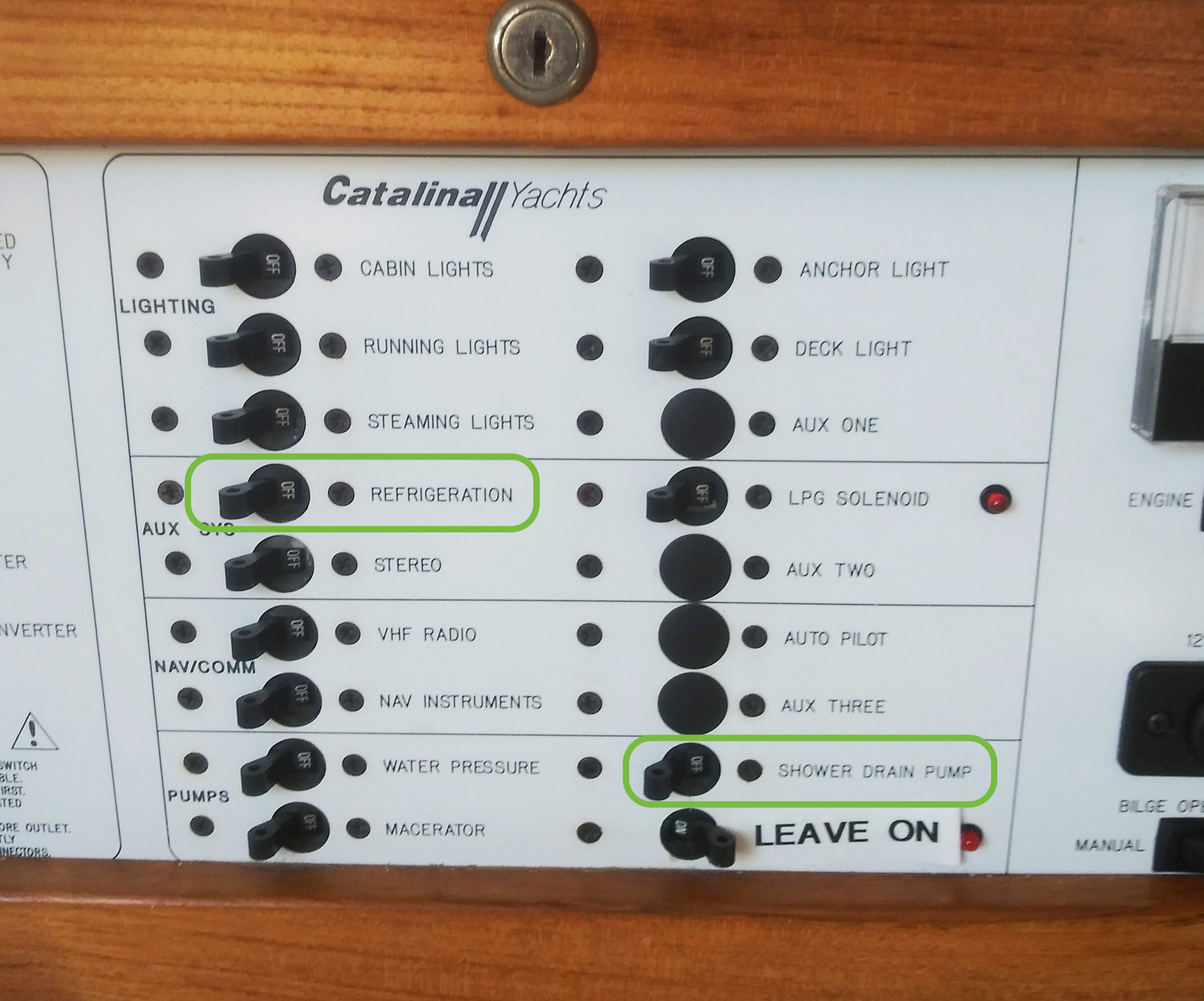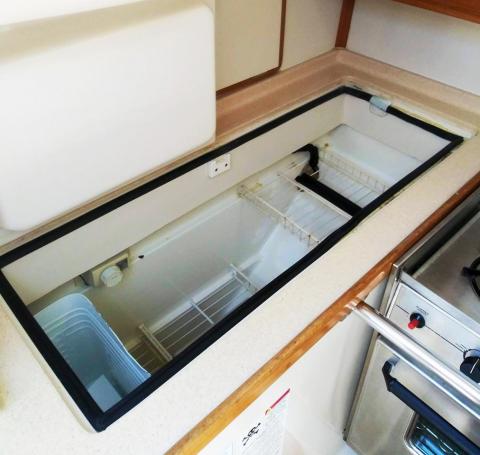
Chartering for a full day or more and planning to dine aboard? Learn the basics of keeping your perishable foods chilled aboard and some best practices for marine iceboxes and refrigerators.
Icebox, Refrigerator, or Both?
Some boats in the Modern Sailing fleet have iceboxes. Some have refrigerators. Many have both, in which case, the icebox and refrigerator can be either two separate units or combined in a single unit. There’s two ways to determine which MSC boats are equipped with what.
- Go to the Boats & Rates page on our website. Click into each boat’s webpage and expand the "Additional Info" section to see what kind of refrigeration the boat has.
- In the Choosing the Right Boat for Your Charter article, the MSC Boat Features and Specifications spreadsheet makes it quick and easy to compare boats and their equipment side-by-side.
Iceboxes have an advantage over marine refrigerators in that they do not consume electricity to keep food cold, but you will have little control over the temperature inside the icebox. Another disadvantage is that ice melts and needs to be replaced periodically. Depending on how much ice you have, how well your icebox is insulated, and how often it’s opened, the ice will need to be replaced daily or every two or three days.
Refrigerators have the advantage of giving you somewhat more control over the internal temperature – and you don’t have to deal with ice. However, refrigerators on MSC boats should not be operated on battery power alone, since they draw a lot of power and will drain batteries quickly. Switch on the refrigerator only when the boat is plugged into shore power or while the engine is running.
Front-loading refrigerators are easier to keep organized, while top-loading refrigerators are better at holding onto cold air. Whether top-loading or front-loading, many refrigerators also include a small freezer compartment. Be aware that once they are powered off, these freezers may not do a good job of keeping ice cream or popsicles solid.
A typical top-loading refrigerator with freezer compartment. When opened, cold air stays trapped at the bottom.
A front-loading refrigerator with small freezer section at the top. When opened, cold air spills out the bottom, decreasing its efficiency compared to top-loaders.
A boat that has both a refrigerator and an icebox offers the best of both worlds.
Icebox Best Practices
If you are not using the icebox, keep the lid propped open to allow ventilation. A warm, sealed icebox can accumulate mildew growth very quickly. If your icebox doesn’t have a latch for securing the lid open, please close it while sailing. Remember to open it up again before leaving the sailboat.
If you plan to use the boat’s icebox to keep your food cold, you will need to purchase ice or make ice at home. Be aware that melted ice water will accumulate on the bottom of the icebox. This water will need to be drained frequently to keep your food dry – not to mention that the liquid can go foul quickly. Before loading the icebox, locate the drain at the bottom. Some drains are equipped with removable plugs. Note whether the drain has a plug or not, and take care to avoid placing anything over the drain that will block water’s escape.
Some boat icebox/refrigerator drains are equipped with pumps, such as our Catalina 320s Phoenix and Kokomo. To use these pumps, first, turn the shower sump switch on at the electrical control panel. Next, look for a 3-way valve under the head sink. Toggling this valve alternates between pumping out either the shower drain or pumping out the icebox drain. Switch the valve to "refrigerator." Depress the shower sump switch to turn on the pump and drain the liquid. (The shower sump switch will be located either inside the lower cabinet door, or on the side of the cabinet next to the toilet.) When the refrigerator box is fully drained, the return the valve position to "shower."
On the Catalina 320s, this switch turns on the refrigerator/shower sump.
Instructions can be found in the Catalina 320s' white binders.
Bagged ice chunks will melt more quickly than a solid block. Here’s an economical and efficient ice tip!
At home a day or two before your charter, freeze two to three 1-gallon jugs containing drinking water. Before freezing, open the cap and remove 1 – 2 inches of water to allow for expansion as the ice freezes. You may choose to keep the frozen jugs inside a cooler during the trip from home to the marina to limit melting. Keeping the ice inside a leak-proof container helps limit the collection of water at the bottom of the icebox. Compared to bags of ice chunks, this is a tidier, drier way to keep food cold! You also will have refreshing cool water to drink from the jug as the ice melts.
Store highly perishable foods such as dairy products and meats closest to the ice. Be careful to tightly seal packages containing meats to prevent meat juices from draining into the icebox. Keep fruits and vegetables furthest from the ice to prevent freeze "burns."
After your charter, be sure to remove all food and waste from the icebox. Do your best to leave it as clean and dry as possible and propped open so that air can circulate.
Marine Refrigerator Best Practices
Turn refrigerators on only while the engine is running or when the boat is attached to shore power. As soon as you board the boat, it’s a good idea to load the refrigerator with food right away, close up the refrigerator, and turn it on to give it some time to cool before you leave the dock. You’ll typically find the refrigerator power switch on the boat’s main electrical control panel.
This is an example of a Beneteau electrical control panel with the refrigerator switch circled in green. Switch locations may vary from boat to boat.
This image of a Catalina 320 electrical control panel shows the refrigerator and shower drain pump switches circled in green. Switch locations may vary from boat to boat. (As mentioned above, run the pump periodically to drain the refrigerator of accumulated condensation or melted ice.)
Power switches may also be located nearby the refrigerator. Many marine refrigerators also have a temperature control dial located somewhere within the unit.
You can use ice in a refrigerator to help keep food cold while it’s powered off. If you choose to use ice, please ensure that the ice is sealed in a leak-proof container (such as a water bottle). Some refrigerators do not have a drain at the bottom like iceboxes have. Melted ice in a refrigerator is a messy problem to avoid.
If your marine refrigerator has a freezer compartment or cold plate, keep meats and dairy foods closest to the freezer compartment or cold plate, and keep fruits and vegetables furthest away from it.
After your charter, be sure to remove all food and waste. Clean the refrigerator the best you can and leave the door propped open to allow air circulation.
If you have any questions about how to use your charter boat's icebox or refrigerator, please ask to speak with one of our friendly Fleet Services specialists.
Learn more about marine refrigeration best practices and other multi-day expedition skills in ASA 104, Bareboat Cruising and ASA 106, Advanced Coastal Cruising.
